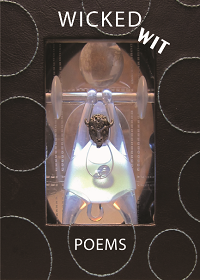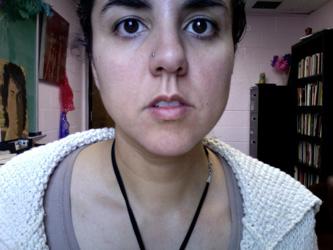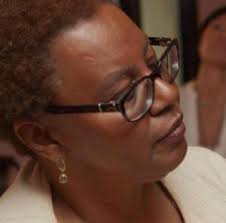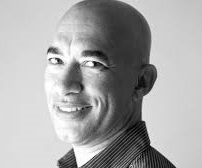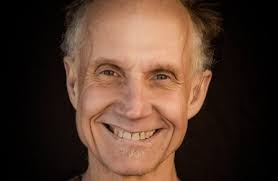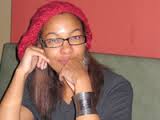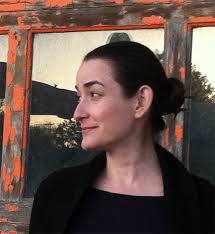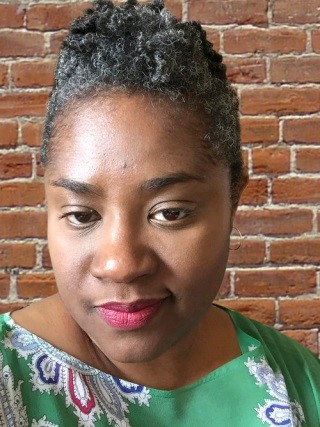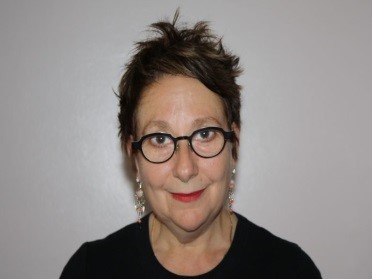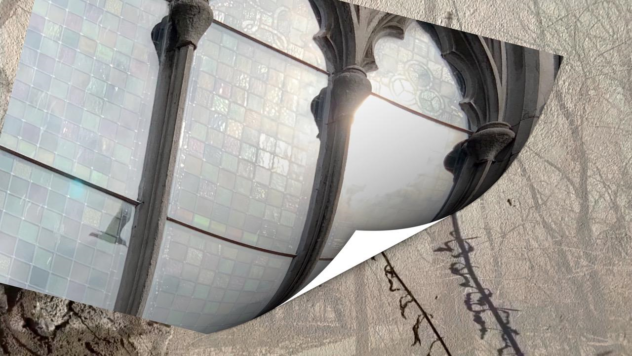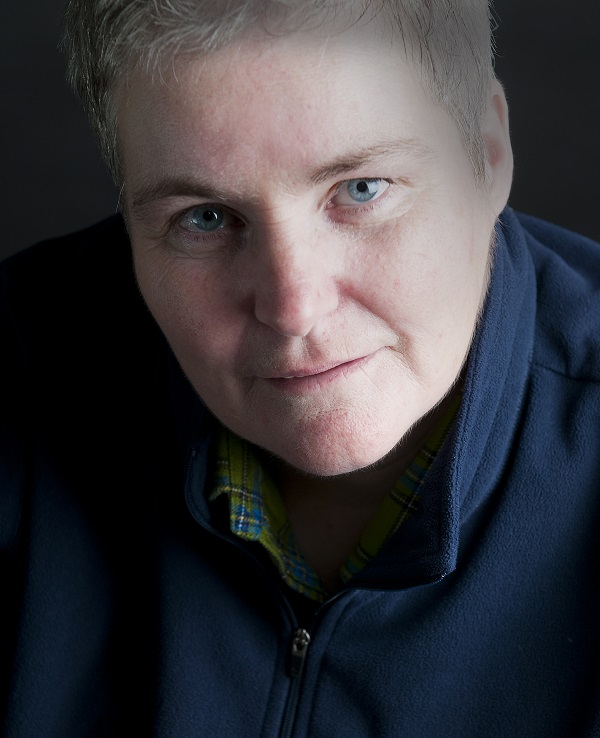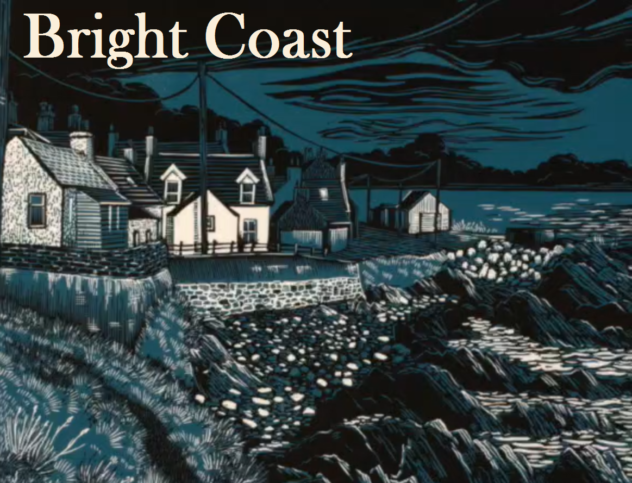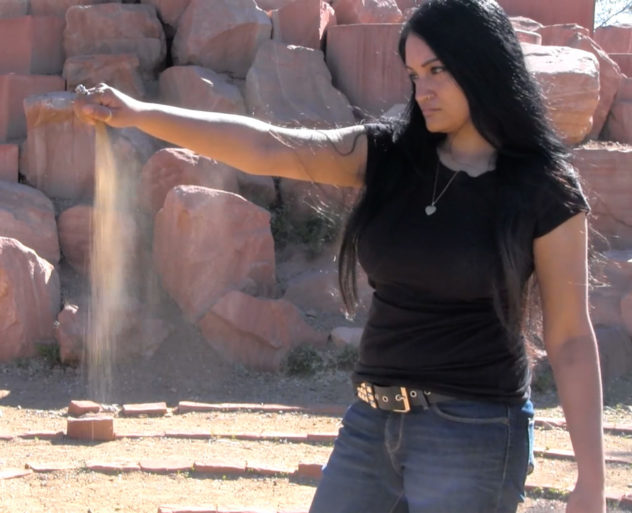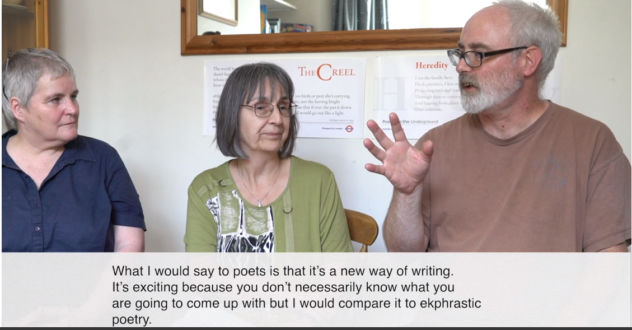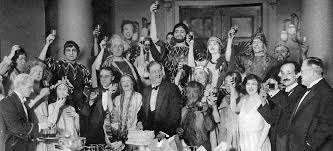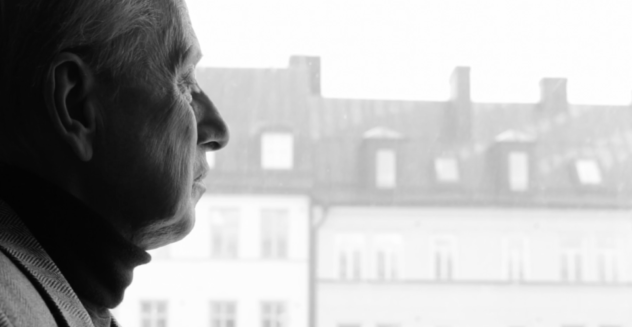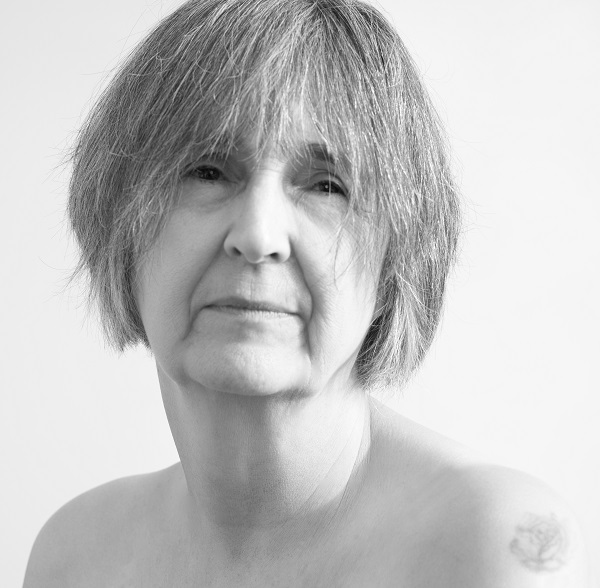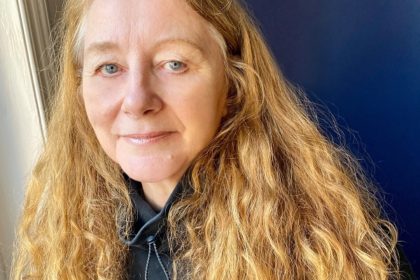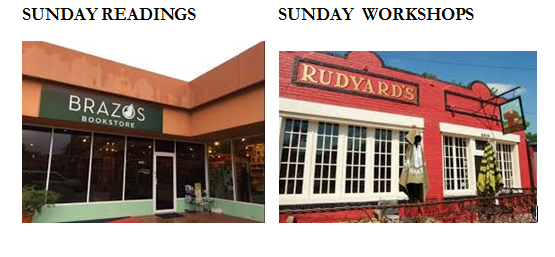 Robert Duncan (1919–1988) was a poet associated with a number of literary traditions and schools, including the New American Poetry and Black Mountain College, as well as the Beats in San Francisco. Duncan was associated with pre-Stonewall gay culture; in 1944 Duncan had a relationship with abstract expressionist painter Robert De Niro, Sr., the father of famed actor Robert De Niro, Jr.[Politically left wing, he was associated with the bohemian socialist communities of the 1930s and ’40s, and the cultural and political upheaval of the 1960s. He was also an influence on occult and gnostic circles. His work was nominated for a Pulitzer Prize.
Robert Duncan (1919–1988) was a poet associated with a number of literary traditions and schools, including the New American Poetry and Black Mountain College, as well as the Beats in San Francisco. Duncan was associated with pre-Stonewall gay culture; in 1944 Duncan had a relationship with abstract expressionist painter Robert De Niro, Sr., the father of famed actor Robert De Niro, Jr.[Politically left wing, he was associated with the bohemian socialist communities of the 1930s and ’40s, and the cultural and political upheaval of the 1960s. He was also an influence on occult and gnostic circles. His work was nominated for a Pulitzer Prize.
 James Tolan is a poet and educator. His collection Mass of the Forgotten was published by Autumn House Press in 2013. He is the co-editor of New America: Contemporary Literature for a Changing Society. Red Walls was published by Dos Madres Press in 2011
James Tolan is a poet and educator. His collection Mass of the Forgotten was published by Autumn House Press in 2013. He is the co-editor of New America: Contemporary Literature for a Changing Society. Red Walls was published by Dos Madres Press in 2011
James Tolan on Robert Duncan’s “H.D.”
Nearly fifty years from when he wrote it, Robert Duncan’s H.D. Book was finally gathered and published in 2011, and I’ve found precious little said about it since, which seems to me a shame. This is a bear of a book: more than 600 hundred pages and as erudite, meandering, associative, allusive, and elusive as his poetry. Let me apologize upfront. I realize this is not the sort book usually, or ever, handled in this setting. Blame Dom. He let me do it. In his defense and mine, what we’ll discuss is not the book in its entirety but its first chapter. Further, I’ve gleaned both the H.D. poem that acts as Duncan’s madeleine and salient passages from the chapter that I imagine will form the backbone of our discussion. In short, it’s more than OK with me if you lean hard on the passages offered here, if you find Duncan’s first chapter daunting, off-putting, or just too damn much right about now.
Here’s what drew me to this tome: Duncan makes his case for the value of a literature that opens one to the possibility that “[t]he ardor for the truth of what was felt and thought, the faith in passion, was a virtue, a power of man: to search out a life within life.” It’s the experience of literature that drew me to it as a young person and that I have worked fiercely to keep alive in my self, my writing, and my teaching since. Duncan is clear that to value literature in this way flies in the face of polite society: “The intensity of my own spirit was lifted from the shame it had seemed to incur in adolescence—for intensity itself in the genteel household was uncouth.”
Since the lives and livelihoods of so many poets in our country continue to be ensconced in our colleges and universities, such intensity seems to grow rarer, replaced by a professionalization that values intellect, verbal and formal invention regardless of discovery, wit, and the book as project. Professionalization entails the acquisition of credentials that declare one an expert in one’s field. Hard to make such claims if you believe, as Duncan does, that the role of the poet is to receive his art and be shaped by it, to know through such experience that your work is far less earned than given, that the poet is made by her poems as much, if not more, than she can take credit for making them.
My desire is not to critique our writing programs, though that’s always good fun, but to gather around some of Duncan’s ideas regarding the experience of poetry, writing it and reading it, as it relates to the sort of lives we lead: poetry not as practice or play alone but as a calling and permission.
As part of this discussion I’d like to consider:
- D.’s “Heat” as an example of Pound’s notion of a “perfect” lyric and Duncan’s sense that the poem in fact works to remain open, that such openness is the essential aspect of its integrated form/content.
- Poetry and literature as a community that is passed down and shared and which affirms a life lived with openness and intensity.
- Duncan’s resurrection of the image, which happened concurrently with Robert Bly’s work on deep image and with which Duncan’s work is parallel. How Duncan defines image as not merely a literary device of visual representation but as “an evocation of depth…the reciprocity between inner and outer realities.”
- How such an experience of image–central to his experience of poetry—extends to related thoughts on organic form, the role of the artist in the creation of her art, and rhetoric.
I hope you’ll take a look at H.D.’s “Heat” and the passages I’ve selected and join us for a discussion of Duncan’s views on poetry and the life of the poet. I think we might have some fun and maybe cause a little trouble along the way.
Heat
- D., 1886 – 1961
O wind, rend open the heat,
cut apart the heat,
rend it to tatters.
Fruit cannot drop
through this thick air–
fruit cannot fall into heat
that presses up and blunts
the points of pears
and rounds the grapes.
Cut the heat–
plough through it,
turning it on either side
of your path.
38-39: There was [Miss Keough’s] admiration for the sensitivity and the intensity that [“Heat”] made available, but there was her shyness too, as if what had been disclosed in the poem touched upon a similar disclosure in herself. [Miss Keough’s] voice told us that something was at issue. The way the poet H.D. admitted—let in—to her self through the poem, and then, in a double sense, admitted to the listener or reader, being almost a victim of the thickness of air, the bluntness of fruit, to let life use you like this, was not shameful but heroic. To reveal, even if it be shameful in other eyes… to propose the truth of what was felt, to articulate just the emotion that was most vulnerable and in need, took courage.
Courage, yes—but there was something more. This poem [“Heat”] in itself was necessary in order for what it evoked to be kept alive as a living power. It was the sense of the necessity that what was felt be kept that filled the poet in writing. To find out feeling meant to evoke a new power in life. To feel at all challenged the course of everything about one. To articulate the feeling, putting it forth in a poem like this, brought others into the challenge. To strengthen response was to strengthen and enlarge not only the resource but the responsibility of life ahead. It was something larger than being courageous then—a trust in living, not only to use things but to be used by them, a drive that broke through the restrictions and depressions of spirit whereby men were shaped to a conventional purpose.
39-40: What I was to be grew in what she was. “I want to know what you will make of this,” she would say, giving me Lawrence’s The Man Who Died or Virginia Woolf’s The Waves to take home with me. I was not to sum them up, not to know something about them so that I could do well in an examination, but I was to grow through them and toward them in some hidden way. What I would make of The Man Who Died orThe Waves would be what I would make of myself, the course of a life. These works were keys at once to responsive chords in myself and to the music they belonged to, to the company of a larger life, and to my work there…. It was a responsibility to glory that she touched in me.
40: H.D., Lawrence, Virginia Woolf had found a realm most real or most alive or most individual in their writing. Wasn’t it that they intensely showed what they were? … What other men kept to themselves, reserving certain thoughts and feelings as private properties, these sought to reveal, not as public property, but as belonging to a community of feeling.
41-2: In [“Heat”] the image stirred not only pictures from my knowledge of a like world, from the shared terms of orchard, pear, and grape at the stem, and the shimmering medium of air in the heat; but it stood too for another statement, arousing and giving a possible articulation to an inner urgency of my own to be realized, to be made good… an unconscious alliance that made for something more than a sensual response… The idea of this being a perfect lyric, an ecstatic, a memorably shaped, moment, drew us away from recognition of the opening and closing address of the poem that cried out for release from such perfection…. [T]his poem… had too, not perfection but the organic irregularities of being felt out from within that life forms have. It had not the regularity of an imposed system, … but its form grew, as living forms do, in the faith or feeling of its own being, transforming itself, using inheritance and environment, tones and cadences, as they happened, toward its melody…The poem was finely conditioned, felt along the track of some inner impulse… It had form not by convention kept but by the pulse of its own event.
42: More than sensation then, more than impression, gave force to the image. It was not only a vivid representation of sensory data but an evocation of depth…the reciprocity between inner and outer realities.
43: The poem had something to do with keeping open and unfulfilled the urgencies of life.
47: [F]or H.D., as for Lawrence or for Williams, the image was not an invention but a numinous event in language, a showing forth of a commanding Reality in the passing personal real.
49-50: The line… was not to express the Image but to call up its Presence, to cause it to happen…There was no thing that was not, given the proper instant in time and intent in vision, Image. There was no image that was not, properly rendered, the nexus of divine and elemental orders in the human world… The image and the voice or dramatic mask provided the nexus of a mystery in Poetry corresponding to the outer and inner worlds in which the poetess, now priestess in the mysteries of the language, worked toward higher and finer modes of participation in a mystery in Life itself.
52-53: [T]he poet works in the densities of the given meanings of words and in the aura of a gathering music, a breath informing the poem, until an image emerges in the work, working the medium until the work itself is immediate to the mind. But this “work” is both a power and, the artist begins to realize … a living presence in which its creator stands…”Am I the god?” [H.D.’s] Pygmalion asks:
or does the fire carve me
for its use?
[A]s the artist works to achieve form he finds himself the creature of the form he thought at first to achieve. The role of the poet, his craft, is to seek out the design in the carpet, to come to know and then to acknowledge his identity in the terms of a poetry he but belongs to. The fire is indeed to carve the poet for its use.
53: As we come into the fullness of our sense of a life work, it is as if we were recovering or rescuing the import of what had always been there. We make good our earliest readings, make real what even we failed to see present at the time, transforming the events of our earlier life in a process of realizing what our work and life comes to mean. Creating meaning we create work and life, and, in turn, for meaning is the matter of the increment of human experience which we come to recognize in the language, we unite our individuality with a vision of its communal identity.
53-54: In the literary establishment Eliot had won the day [and] Imagism was dismissed as if it were a false religion. The Imagist fallacy was not an inherent weakness but a danger… [T]he rationalist orthodoxy strove to establish Imagism as an aberration, a kind of insanity of the poem, in which imagery, which properly was a means in the poet’s presentation of his picture, became an end, as if image carried a meaning in itself. There is a crucial difference between the doctrine of the Image where Poetry itself is taken to be a primary ground of experience and meaning in life, and the image which is taken as a fashion in the literary world. With H.D.’s “Heat” …I cannot separate the poem from its operation as prophecy or prayer in the shaping of my own life, the efficacy of the poem to awaken depths in me. The key lies in a rhetoric which is magic in its intent and not literary. This is its heresy.
55-56: [T]he popular pejorative demean[s] the word “rhetoric,: voiding its base in the likeness between the flow of speech and the flow of a river, [one] troubles the currents of meaning…The flow of speech was for the Greeks, as for us, an expression that could refer to words running glibly off the tongue being like a babbling brook, and likewise to the essential power of fluency in saying. The poet must be fluent in speech. There must be currents of meaning as well as particularities of meaning. Speech was a river… The mistrust that men had of speech was their mistrust of rivers that swept men along, that persuaded.

